Easter is a time for rejuvenation and partaking in the beauty of spring. What's a better way to celebrate rebirth than with flowers? Buzzle brings to you flowers that will make your Easter celebrations more meaningful.
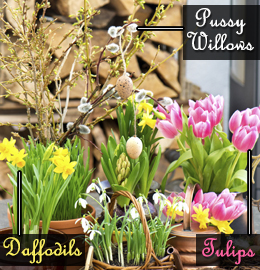
See the land, her Easter keeping,
Rises as her Maker rose.
Seeds, so long in darkness sleeping,
Burst at last from winter snows.
Earth with heaven above rejoices ...
― Charles Kingsley
As the weather gets warmer, it sets the stage for flowers to wake up from their slumber and break forth in abundant bloom. With the celebrations of Easter taking place around the same time, it evidently coincides with the debut of a zillion beautiful flowers.
Used as centerpieces, or to decorate the homes and churches for Easter, these flowers have come to be associated with Easter. Here are some of the most popular flowers that you can give as gifts or use to decorate your house this Easter.
Easter Lily
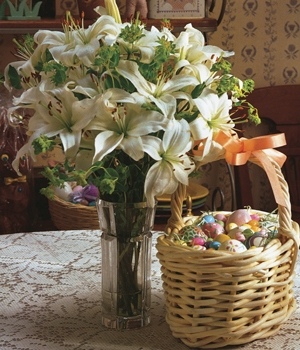
Lilium longiflorum, or the Easter Lily as it is known, is native to the Ryukyu Islands, Japan. Thought to have grown at the site of the crucifixion, these trumpet-shaped flowers have long since come to be associated as the traditional flowers of Easter.
Symbolism
Often taken as a sign of resurrection, white lilies are used to symbolize love and hope. It is also used as a symbol of Christ's purity and divinity.
Significance
Presenting white lilies and Easter lilies, in particular, signify your pleasure to be acquainted with the recipient. Presenting yellow lilies is akin to telling someone to seize the opportunity and live for the moment.
Daffodils
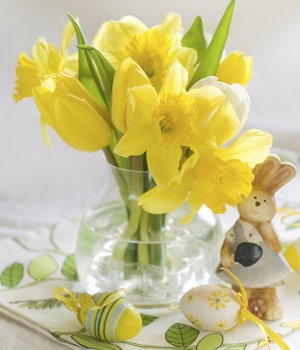
Daffodils, or narcissus, are native to the meadows and woods of Europe, North Africa, and West Asia. These unique bell-shaped flowers surrounded by a ring of floral leaves are said to have first bloomed in the garden of Gethsemane at the time of Christ's resurrection. Called Easter bells or
Osterglocken in Germany, these are highly sought flowers for Easter decorations.
Symbolism
The daffodil is taken as a symbol of rebirth and new beginnings.
Significance
Presenting a bunch of this lively flower to someone indicates your respect for the particular individual. It is also indicative of your unrequited love for the person.
Tulips
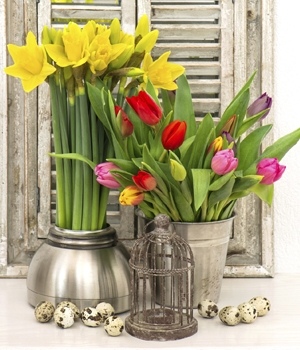
A perennial, bulbous plant, tulips are native to the Iberian Peninsula, and their range extends from North Africa to Greece, from the Balkans to Syria, and from Iran to China. While the flower does not have a special significance for Easter, it is associated as being the flower of eternal life.
Symbolism
White tulips are known to symbolize newness and purity. They are often associated as being the flower that symbolizes
heaven on earth.
Significance
Presenting a bouquet of tulips could mean anything from enthusiasm, passion, and desire, to a perfect declaration of love.
Pussy Willows
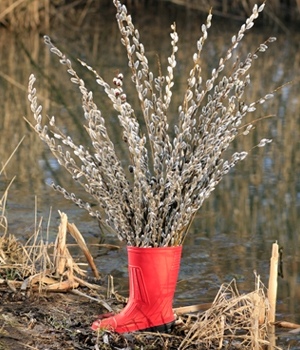
Harbingers of spring, willows and sallows with their furry catkins are used for Easter decorations. Flowering shoots of the pussy willow are used as a replacement for palm fronds in Europe and America during Palm Sunday processions and decorations.
Symbolism:
It is a symbol of birth, intuition, rejuvenation, and is taken as a sign of revitalizing hope.
Significance
The flower is often associated with motherhood and fertility.
Daisy
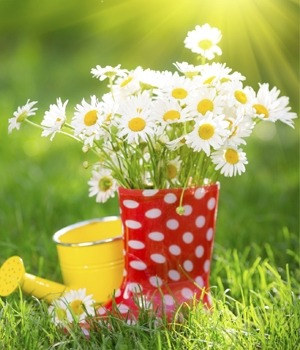
Often considered to be a weed, the daisy which is also linked to the sunflower and aster family is native to Europe. It is said that this flower gets its name from the term
day's eye, solely because the flower opens during the day and curls its petals inwards at night.
Symbolism
It is a reminiscent of contemplation and solace and is often used to symbolize purity and tranquility.
Significance
Presenting daisies is significant of purity, innocence, loyal love, beauty, patience, and simplicity.
Hyacinth
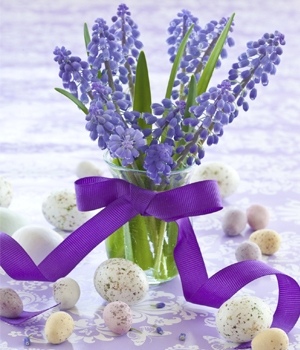
The bell-shaped flowers are native to the eastern Mediterranean regions from Turkey to northern Israel―north-east Iran, and Turkmenistan. These magnificent flowers are associated with rebirth and spring, making it a quintessential flower for Easter celebrations.
Symbolism
It is a symbol of birth, intuition, rejuvenation, and is taken as a sign of revitalizing hope.
Significance
Often used to signify sport or play in the language of flowers, hyacinth represents constancy, while blue hyacinth expresses sincerity.
Dining Table Decorating Ideas


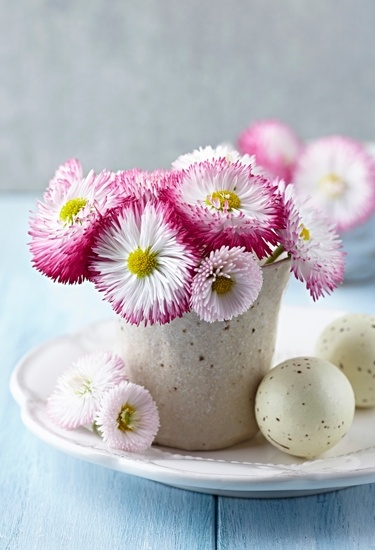
Daisy flowers with Easter eggs
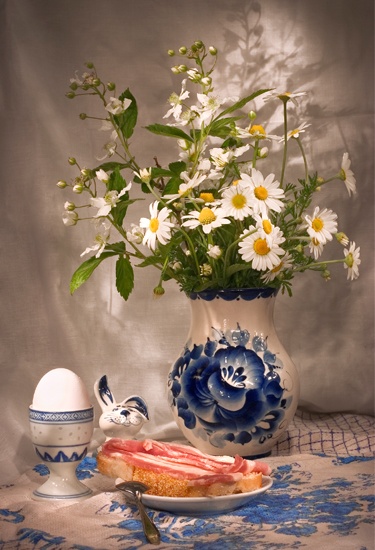
Wild daisies in a vase
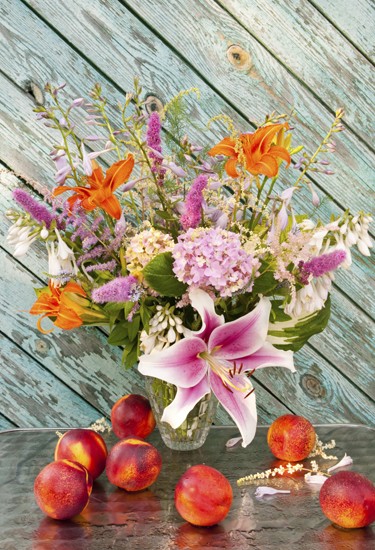
The Easter Bouquet with daisies, tulips, and lilies
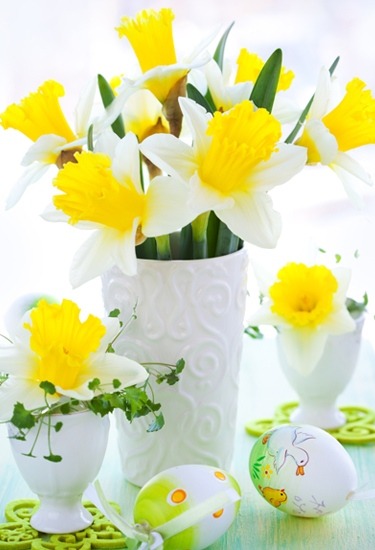
Two-colored daffodils placed in a white vase
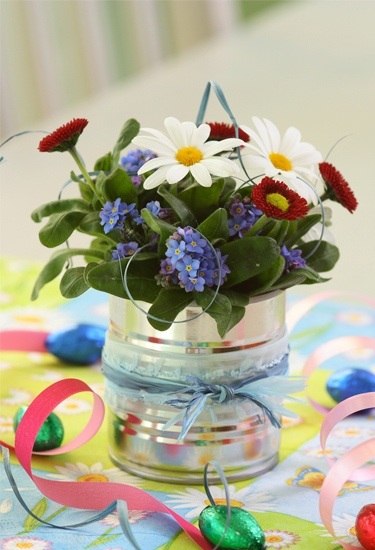
Daisies in a tin
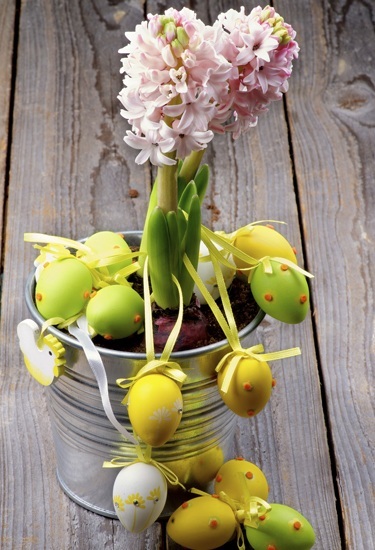
Hyacinth flowers with decorated Easter eggs
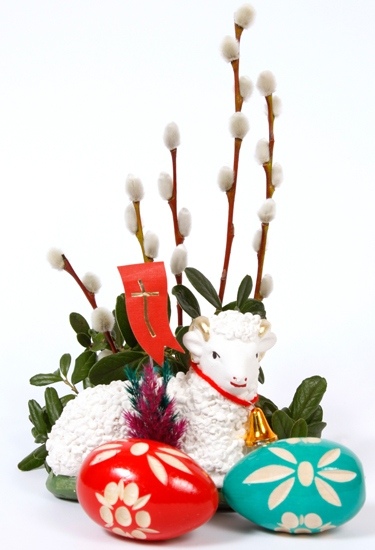
Easter decoration using pussy willows
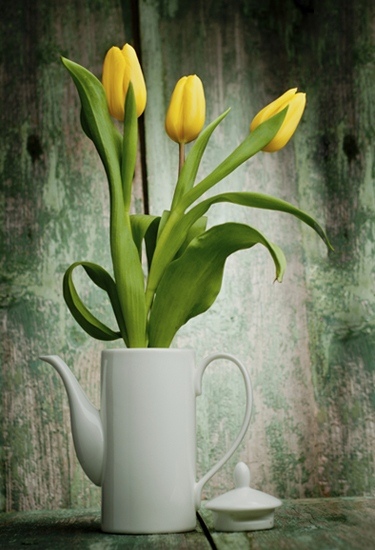
Yellow tulips in a white teapot
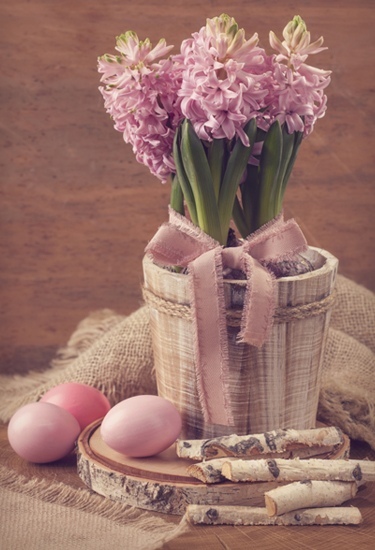
Eco-friendly Easter decoration using hyacinth flowers
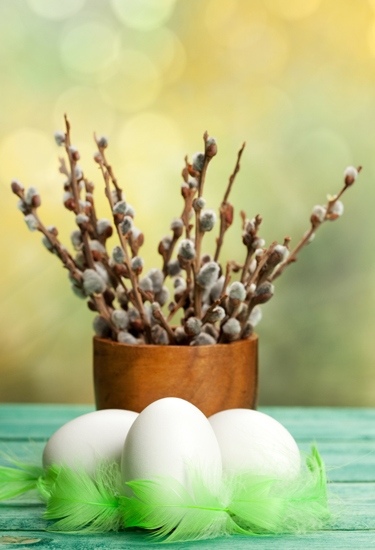
Pussy willows in an earthen mug placed on a table
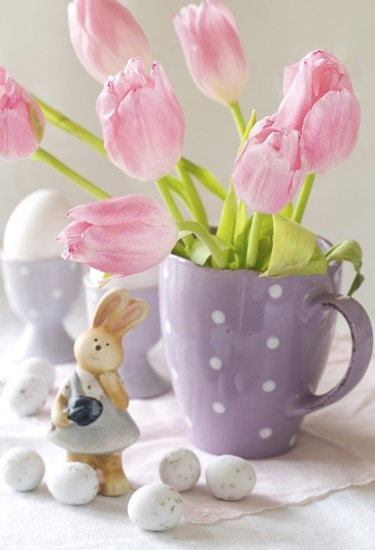
Tulips in tea mugs
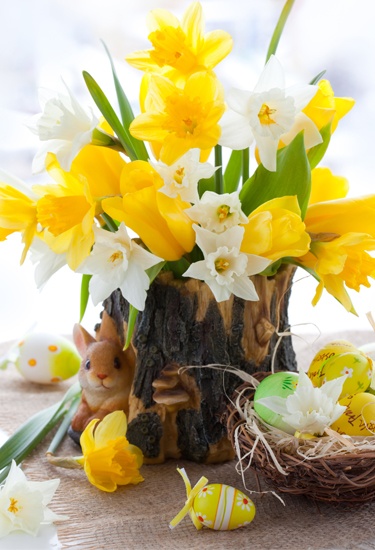
Daffodils and Easter eggs
Easter Decoration Ideas


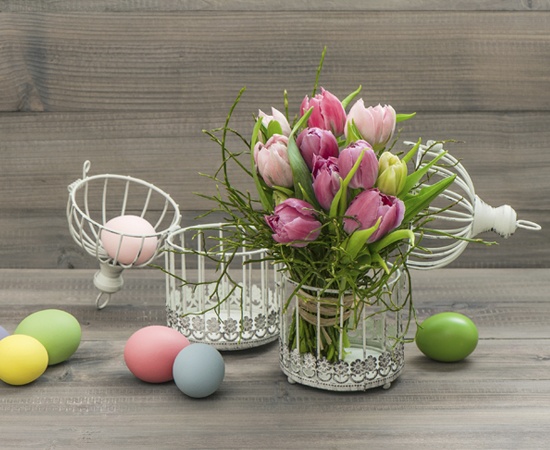
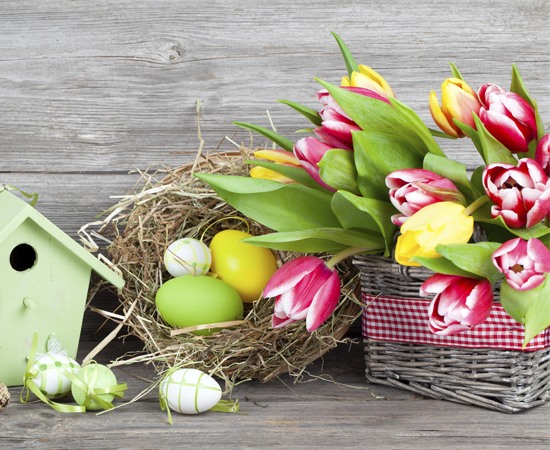
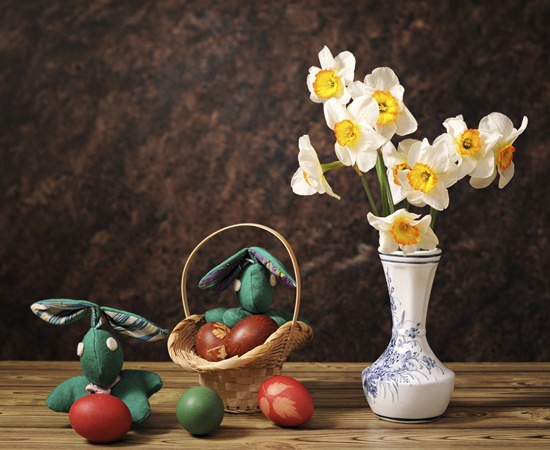
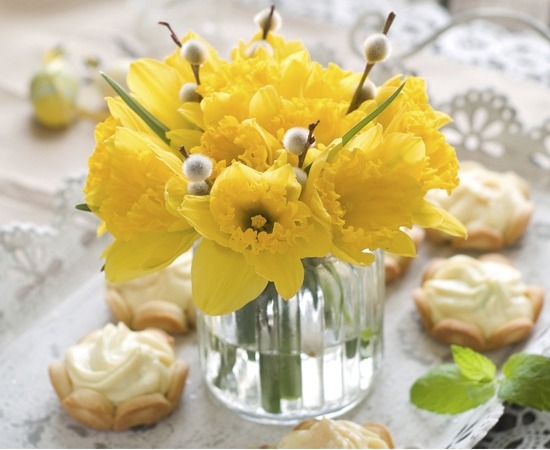
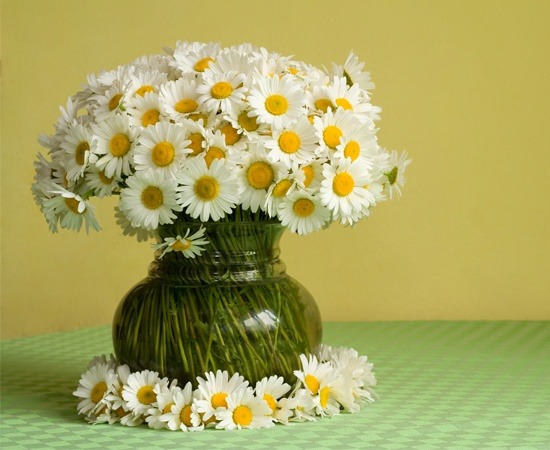
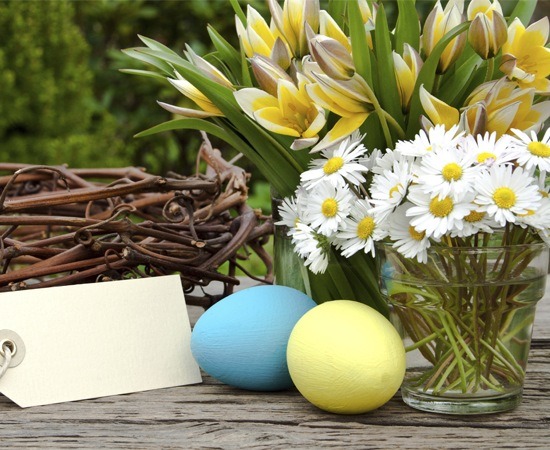
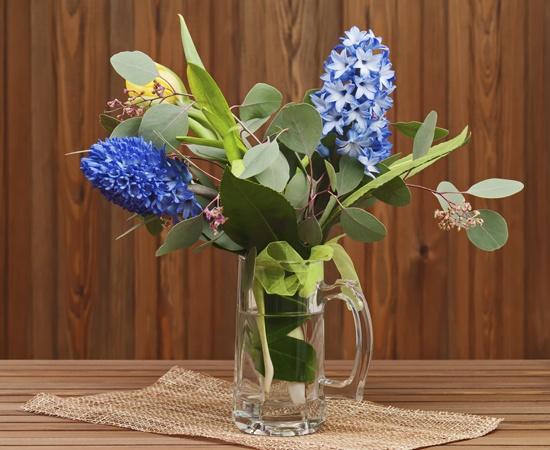
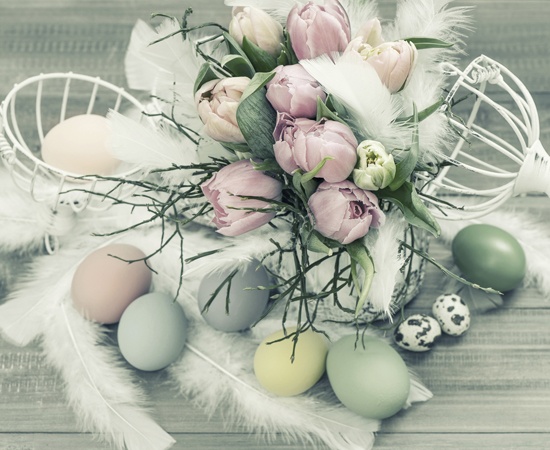
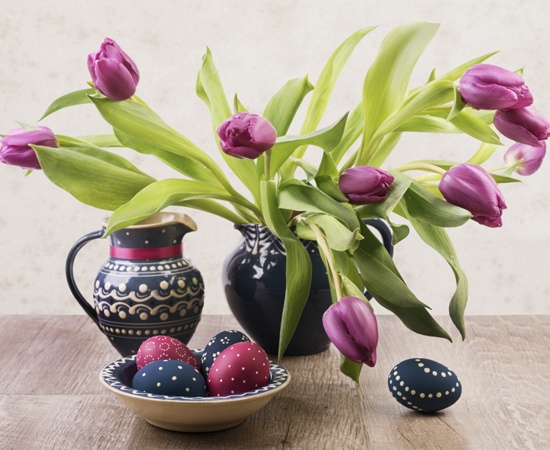
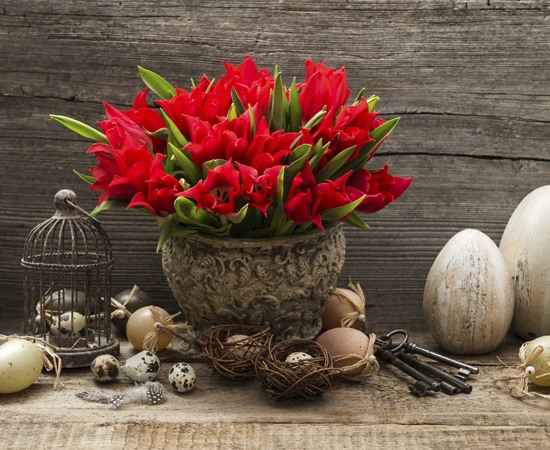
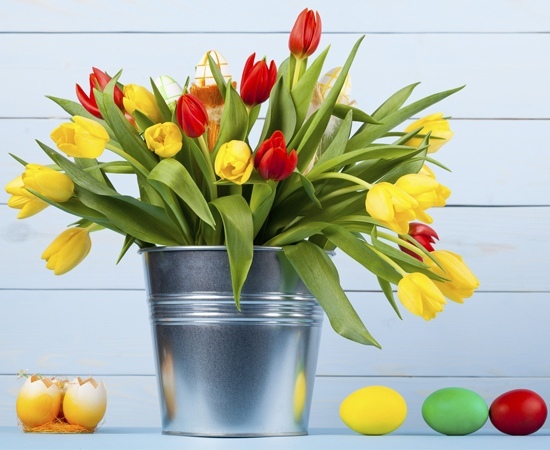
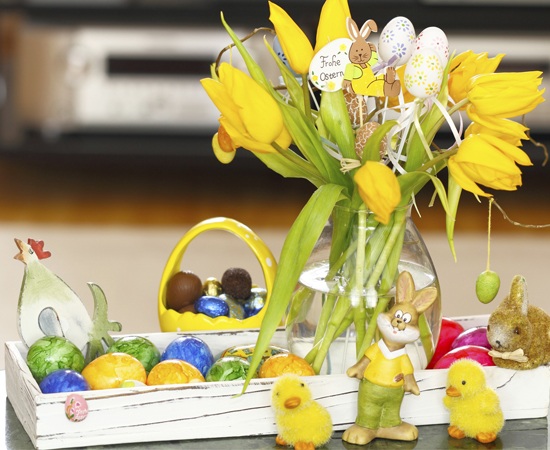
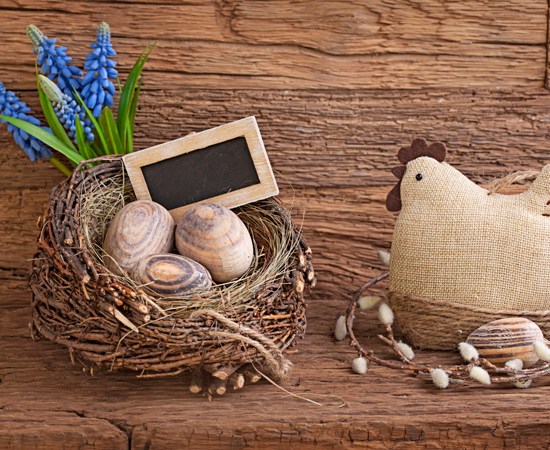
You can also use roses, snowdrops, azaleas, calla lilies, along with the traditional flowers to decorate your house this Easter. Alternately, you can use dry decoration to do up your house this Easter.






 See the land, her Easter keeping,
See the land, her Easter keeping, Lilium longiflorum, or the Easter Lily as it is known, is native to the Ryukyu Islands, Japan. Thought to have grown at the site of the crucifixion, these trumpet-shaped flowers have long since come to be associated as the traditional flowers of Easter.
Lilium longiflorum, or the Easter Lily as it is known, is native to the Ryukyu Islands, Japan. Thought to have grown at the site of the crucifixion, these trumpet-shaped flowers have long since come to be associated as the traditional flowers of Easter. Daffodils, or narcissus, are native to the meadows and woods of Europe, North Africa, and West Asia. These unique bell-shaped flowers surrounded by a ring of floral leaves are said to have first bloomed in the garden of Gethsemane at the time of Christ's resurrection. Called Easter bells or Osterglocken in Germany, these are highly sought flowers for Easter decorations.
Daffodils, or narcissus, are native to the meadows and woods of Europe, North Africa, and West Asia. These unique bell-shaped flowers surrounded by a ring of floral leaves are said to have first bloomed in the garden of Gethsemane at the time of Christ's resurrection. Called Easter bells or Osterglocken in Germany, these are highly sought flowers for Easter decorations. A perennial, bulbous plant, tulips are native to the Iberian Peninsula, and their range extends from North Africa to Greece, from the Balkans to Syria, and from Iran to China. While the flower does not have a special significance for Easter, it is associated as being the flower of eternal life.
A perennial, bulbous plant, tulips are native to the Iberian Peninsula, and their range extends from North Africa to Greece, from the Balkans to Syria, and from Iran to China. While the flower does not have a special significance for Easter, it is associated as being the flower of eternal life. Harbingers of spring, willows and sallows with their furry catkins are used for Easter decorations. Flowering shoots of the pussy willow are used as a replacement for palm fronds in Europe and America during Palm Sunday processions and decorations.
Harbingers of spring, willows and sallows with their furry catkins are used for Easter decorations. Flowering shoots of the pussy willow are used as a replacement for palm fronds in Europe and America during Palm Sunday processions and decorations. Often considered to be a weed, the daisy which is also linked to the sunflower and aster family is native to Europe. It is said that this flower gets its name from the term day's eye, solely because the flower opens during the day and curls its petals inwards at night.
Often considered to be a weed, the daisy which is also linked to the sunflower and aster family is native to Europe. It is said that this flower gets its name from the term day's eye, solely because the flower opens during the day and curls its petals inwards at night. The bell-shaped flowers are native to the eastern Mediterranean regions from Turkey to northern Israel―north-east Iran, and Turkmenistan. These magnificent flowers are associated with rebirth and spring, making it a quintessential flower for Easter celebrations.
The bell-shaped flowers are native to the eastern Mediterranean regions from Turkey to northern Israel―north-east Iran, and Turkmenistan. These magnificent flowers are associated with rebirth and spring, making it a quintessential flower for Easter celebrations.

 Daisy flowers with Easter eggs
Daisy flowers with Easter eggs Wild daisies in a vase
Wild daisies in a vase The Easter Bouquet with daisies, tulips, and lilies
The Easter Bouquet with daisies, tulips, and lilies Two-colored daffodils placed in a white vase
Two-colored daffodils placed in a white vase Daisies in a tin
Daisies in a tin Hyacinth flowers with decorated Easter eggs
Hyacinth flowers with decorated Easter eggs Easter decoration using pussy willows
Easter decoration using pussy willows Yellow tulips in a white teapot
Yellow tulips in a white teapot Eco-friendly Easter decoration using hyacinth flowers
Eco-friendly Easter decoration using hyacinth flowers Pussy willows in an earthen mug placed on a table
Pussy willows in an earthen mug placed on a table Tulips in tea mugs
Tulips in tea mugs Daffodils and Easter eggs
Daffodils and Easter eggs













